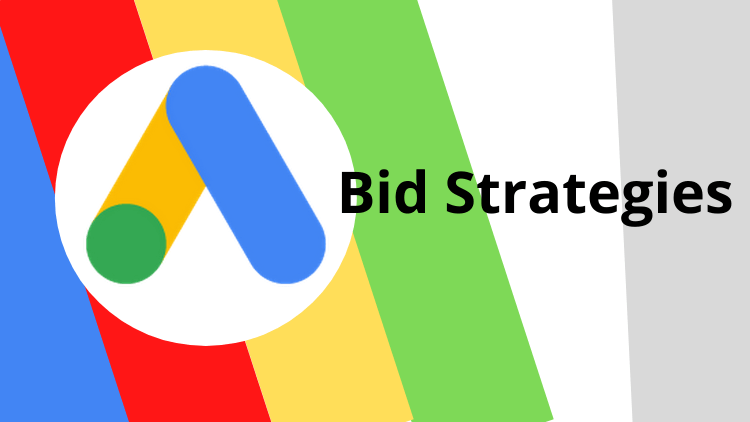Google Ads has a lot of different bid strategies that you can use to get your ads in front of the right audience. A Google ads bidding strategy is how much you are willing to spend when somebody clicks on your ad. This article will help guide you through two popular bidding strategies, Maximum Click and Maximum Conversion so that you can make an informed decision about which one is best for your business.
Max Clicks
A Maximum Clicks strategy is when you bid on a keyword and pay the most amount of money for one click. This means that your ad will be shown, but if someone else’s ads are cheaper than yours, Google won’t show them because they didn’t win the auction with their lower bid. For example, you could say, “I am willing to spend up to $25 per click for this term.” You set yourself as high as possible in order to get the maximum chance at clicks; however, sometimes, the quality score can suffer from setting too low of a budget and getting many impressions which do not result in conversions. A good rule of thumb is to make sure enough people see your ad, but not too many.
Max Conversions
A Maximum Conversion strategy is when you bid on a keyword and pay the most amount of money for one conversion. A conversion would be something like someone signing up to your email list or making a purchase from your eCommerce website. In this situation, it’s important that Google know who qualifies as a “conversion,” so instead of just showing ads at random, they target people who have been searching for those specific words/phrases—increasing conversions in the process!
A great example of how powerful maximum conversions can be is with Pay-per-click (PPC) advertising on Facebook ads. By creating audiences based on interests such as “shoes” or “purses,” you are able to get your ads in front of the right people while avoiding potential costs from showing an ad about shoes to someone who might not even wear them. A word of caution is that sometimes your quality score will suffer from setting a budget too low. It’s good to have as many conversions as possible, but keep an eye on your budget and profits. Ads cost must not cross your budget.
Along with that, below are some other Google ads strategies that you need to know before starting out your ads journey. But wait! If you want to learn everything about Google ads, we have prepared a very good course for you. Our course will cover everything you need to be an expert in Google ads, and when you complete our course, we will provide you with a certificate that you can use in your online portfolio to attract more clients as a certified Google ads expert. Make sure to check it here.
CPM (Cost-Per-Thousand-Impressions)
This is a bidding strategy where you have total control. Cost per thousand impressions means that the price depends on how many times an ad appears online, and this can help your marketing campaign be more cost-effective than other forms of advertisement!
This means that if your ad is seen 1000 times, then you will be paying. So advertisers are charged based on how many views their advertisements have when placed onto Google’s platform- which could help them reach more customers!
CPV (Cost-Per-View)
Video ads have a unique type of bidding strategy and can be very effective. You’ll pay for video views, clicks on your call-to-action buttons, as well as any interactions that take place while someone watches the ad in order to increase engagement with their message or product.
What is a view in video ads? When a viewer watches at least 30 seconds of your video ad, it’s considered a view, and you pay for it. But if someone has watched your ads for less than 30 seconds and interacted or clicked on it, you also be charged. Anything less than 30 seconds is not considered a view, and you won’t be paying for it. Make sure to keep an eye on your ad’s watch time. If people are clicking away too soon, your ad is might not be engaging or have not targeted the right audience. Always keep making improvements to avoid loss.
CPC (Cost Per Click)
In this strategy, you pay for every click, and it works well for search ads. When using the CPC ad strategy, you will not be paying for impressions. But if your ad is getting a lot of impressions and very low clicks, your CTR (click-through rate) will also be low, eventually affecting your Ad’s quality score. A low or bad quality score will lead you to be paying high for a click. 80+ or around 90 quality scores is highly recommended. A good quality score of your ad will also lead to appear higher in search results, which will get you more clients/ conversions.
Using manual CPC, you can also control your cost as you can decide your budget per click. But not keep your bid too low. If your bid is too low, your ad may not appear in search results as there are so many other advertisers with a high budget per click. So if your ad is not getting impressions and you are using manual CPC, increase your budget per click to outbid other advertisers.
Conclusion
If you are a beginner and want to run your first campaign, make sure to choose the right strategy for you. Based on the product/service you are advertising, you have to test several things before getting good results, such as keywords, choosing a bidding strategy, and many other things. If you are not aware of Google ads, it may lead you to a huge loss. Consider watching our course to master Google ads as less or no knowledge can be harmful to your hard-earned money. Thanks for reading till the end!
